New Delhi, India: The Rise of Khalistan networks have continued to thrive not only in Pakistan but also in safe havens in Malaysia, Thailand, UK, Germany, Canada, and the US. But what is making the security establishment sit up and take notice is that unlike in the two decades since chief minister Beant Singh's assassination in August 1995, there is suddenly no dearth of local foot soldiers for the Khalistan terror machine.
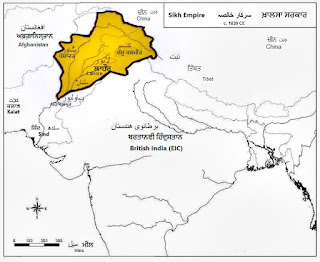 |
| Sikh Empire 1799 (Source: Internet) |
Sikh empire and
sentiments- Sikh empire was established by Maharaja Ranjit Singh
in 1799 by aggregating different missiles of Sikhs. The establishment ran for
almost 50 years (1799-1849) and fought 2 Anglo-Sikh wars against the British.
Capital of the empire was Lahore (Now situated in Pakistan). This territory was
the one with which Sikh’s later was really obsessed, something like Palestine
for Jews. The Sikh’s empire was overtaken by British in 1849 and reconsolidated
as Punjab.
 |
Photo:-Master Tara Singh 1945
|
Depletion of Punjab and
Rise of Hostility: - In 1947, with independence, the partition of India took place, which led
to the depletion of Punjab and a lot of bloodshed in the state, Punjab suffered
terrible losses. Area of Punjab was divided into two, half with the capital of Lahore,
was given to Pakistan and half was kept with India, which was merged with
PEPSU (Patiala and East Punjab state union). Sentiments of Sikh’s were
shattered. Punjab was just a bunch of princely states now. In 1948 Akali dal
first introduced the idea of ‘Sikh Suba’, but the idea was not much popular,
Leaders of Akali dal went to law minister B.R Ambedkar, he gave the idea to
demand area based on linguistics ie; ‘Punjabi Suba’. In 1956 Sikh’s under the leadership of Akali Dal demanded a majority state from the center, however, the
demand was rejected by SRC (state recognization commission) stating that it is
not feasible. This rejection added the fuel to fire and Akali Dal started
demanding Autonomy for Punjab. Punjabi Suba movement was started in 1966 in which,
Akali Dal, the major leading party of the Sikh’s brought up the issue to
preserve the Punjabi language rather than upbringing the issue of religion because
they wanted to interplay politics and religion more efficiently. The movement
gave the result and Punjab recognition act was passed in the parliament by the
Congress under the leadership of Indra Gandhi. However, there were certain limitations
in the bill, a lot of Punjabi speaking area in Punjab were given to
Himachal-Pradesh and Haryana.
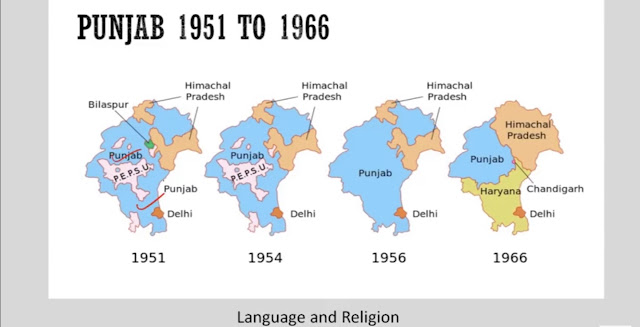 |
| Punjab After Independence (Sources: Internet) |
Sikh Diaspora and Idea
of Khalistan: - After the partition of Punjab, came in the Sikh Diaspora.
Jagjit Singh Chauhan, one of the Sikh separatist leaders, introduced the idea
of Khalistan, a separate country for the Sikh’s (Sikh homeland). He went out of
Punjab and started explaining the Idea of Khalistan to N.R.I Sikhs. He
introduced donation drive in the 1970s and started printing currency and passports
of the Khalistan.
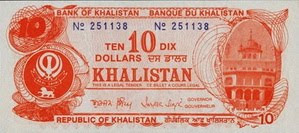 |
| Khalistan currency 1980’s(Sources: Internet) |
 |
| Jagjit Singh Chauhan |
Idea of
Khalistan proposed by him was something much more relevant to the Sikh empire in The ’80s. The capital of Khalistan was as such suppose to be Lahore, however, after
the partition of India and Pakistan in 1947, this idea proposed was quite
unrealistic as it not only considered separation from India but also from
Pakistan. The territory was a landlocked and appraised area of two very hostile
countries.
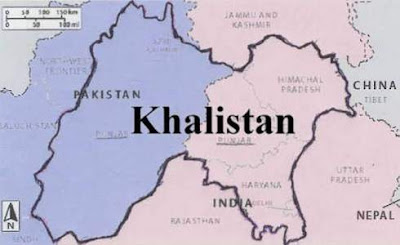 |
| Geographical Idea of Khalistan |
| Passport of Khalistan |
The result of
his activities started coming and soon after the New York Times, the famous newspaper of the USA printed an article on
the declaration of Khalistan, after
which government in India realized that the movement of a ‘Sikh homeland’ was being
fueled up amongst the Sikh’s in other countries.
Anandpur resolution 1973-
Grabbing
the chance, Akali dal came up with the new card of Anandpur resolution, and
again demanded the reconsideration of the area with various other aspects for Punjab. It included:-
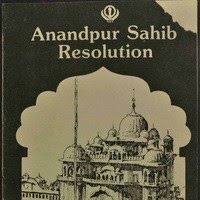 |
| Anandpur Sahib Resolution |
- Transfer of the federally administrated city of Chandigarh to Punjab
- Transfer of Punjabi speaking and contagious area of Haryana to Punjab
- Decentralization of state under the existence of the Constitution, limiting the central government’s role.
- Call of land reforms and industrialization of Punjab.
- The enactment of all India Gurudwara act.
- Revision of government’s recruitment quota restricting the number of Sikh’s in the armed forces
Rise of Bhindranwale- Popularity and empathy
towards Akali dal was rising in Punjab, so, Giyani Zail Singh (chief minister
of Punjab 1972-1977) in Congress party consulted Indra Gandhi and gave an idea of
empowering a parallel and friendly force in Punjab, which could tackle Akali’s.
The force was ‘Jarnail Singh Bhindranwale’, the president of ‘Damdami Taksal’
in Punjab. ‘Damdami Taksal’ was another religious institute in Punjab which
preached Sikhism in the world. The idea was to empower Bhindranwale, who would
work for Congress in Punjab and would tackle Akali Dal. The Idea worked,
Bhindranwale with his burning speeches got endless popularity and soon overran
the power of Akali Dal, the public was now in his court. People around Punjab
started following him as the 11th guru of the Sikhs, but, the things
didn’t go well for too long and wave turned the tables. Bhindrawale becomes too powerful
to be controlled by the government. He started preaching for Khalistan and soon
after got the backing from ISI (Pakistan secret service) and N.R.I Sikh’s. He
resided himself in the holiest shrine of the Sikh’s i.e. (Golden temple),
started his fortification by the end of 1983. Akali dal till time never demanded Khalistan on the papers but, now volunteered with Bhindranwale. Both started
‘1982 Dharam Yudh Morcha’ for implementation of ‘Anandpur Resolution’ and threatened
Government to protest for it in ‘Asian Games’. Due to this, all the Sikh’s
going towards Delhi were searched and frisked including some high ranking army
officials. This incident gave an insulin spike to emotions of the Sikh’s.
 |
| Former Prime Minister Indira Gandhi(on left) and Bhindranwale(on right) |
Pakistan’s Free rein: - Pakistan wanted the revenge of loss in the 1971 war
against India. Eastern part of Pakistan got separated from it after the Indo-Pak war, It became an independent country called Bangladesh. Pakistan
wanted same to happen with India, so, ISI started backing up Bhindranwale and
started training the militants in his batch and providing them with weaponry. However, when the prime minister Benazir Bhutto of Pakistan was asked about it
in the press, she totally rejected any backing to the movement stating that it
would be shoddy for Pakistan, as the capital of Khalistan was considered to be
Lahore.
ASSASSINATIONS AND
HIJACK:-
Empowerment of the separatist movement led by Jarnail Singh Bhindranwale and
failure of the government to act led to the assassination of various people.
- 1980- Baba Gurbachan Singh, Leader of Nirankari was killed, the aftermath of a clash between Nirankari (orthodox Sikh’s) and Traditional Sikh.
- 1981-Lala Jagat Narain was killed after he espoused the cause of Hindi language in ‘Punjab Kesari’ newspaper during the census in Punjab.
- 1983 (April)- DIG of Punjab ‘AS Atwal’ was murdered at steps of golden temple, no one came to pick up the body for 2 hours due to fear of Bhindranwale.
- 1983 (October)- 6 Hindu bus passengers were murdered.
- This also leads to the murder of several Sikh youngsters by Punjab police in encounters in order to get promotion aftermath the movement.
An Indian Airlines plane carrying 111 passengers was
hijacked by Knife welding advocates of Khalistan, they forced the pilot to fly to
Pakistan and demanded the release of Sikh militants from Indian jails.
OPERATION BLUE STAR:- Since 1984 came,
Bhindranwale had established a fort in the Akal Takht that is located exactly
behind Golden temple in its premises. Huge numbers of weapons were collected
and numbers of fortifications were established in a complex of ‘Darbar Sahib’.
Bhindranwale was quite assured that the government would never take risk of entering
‘Darbar Sahib’ and would fail to act as it failed earlier. He also preached an ‘Hukamnama’ from Darbar Sahib that, as soon as army attacks the complex, people from all
over Punjab should volunteer towards golden temple as suicide missionaries, But
he was wrong, government sent army troops in June 1984 under the governance of Lute
net General KS Brar to flush out the militants from golden temple complex. Curfew
was declared in Punjab and no was allowed to move. The operation went on for
almost 6 days and Bhindranwale was eliminated.
ASSASSINATION OF INDRA
GANDHI –
Indian prime minister Indra Gandhi was murdered on 31 October 1984 at
9:29A.M at her residence in Safdarjung
road, New Delhi by her Sikh bodyguards ( Satwant Singh-Beant Singh) as an aftermath of her action on the golden temple.
Soon after her assassination on the next day, Sikh
massacre broke out on the streets of Delhi, an estimate of 8000-17000 Sikhs were
murdered in Delhi and neighboring suburbs of the city. The data given by the
government was a lot less, almost 2800. The cases in the supreme court are
still going. We hope to see the results soon.

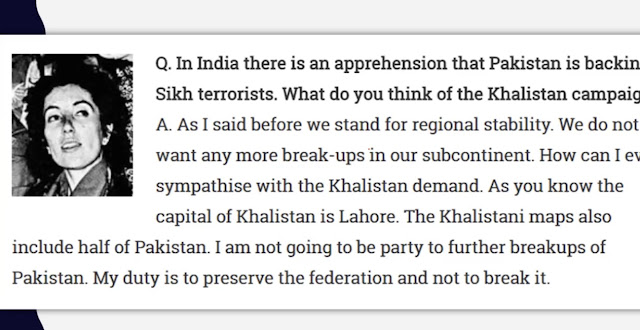
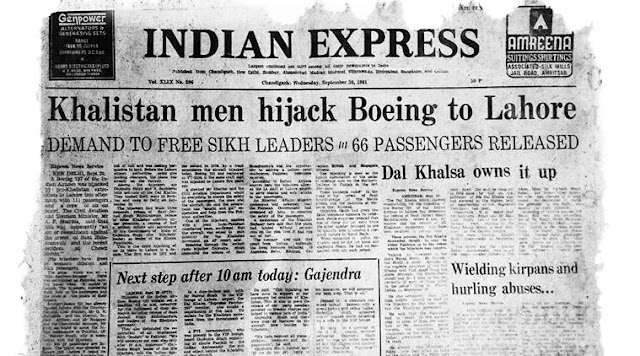
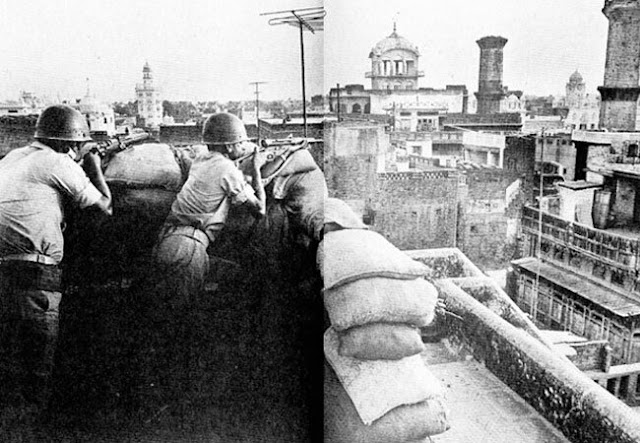


0 comments:
Post a Comment